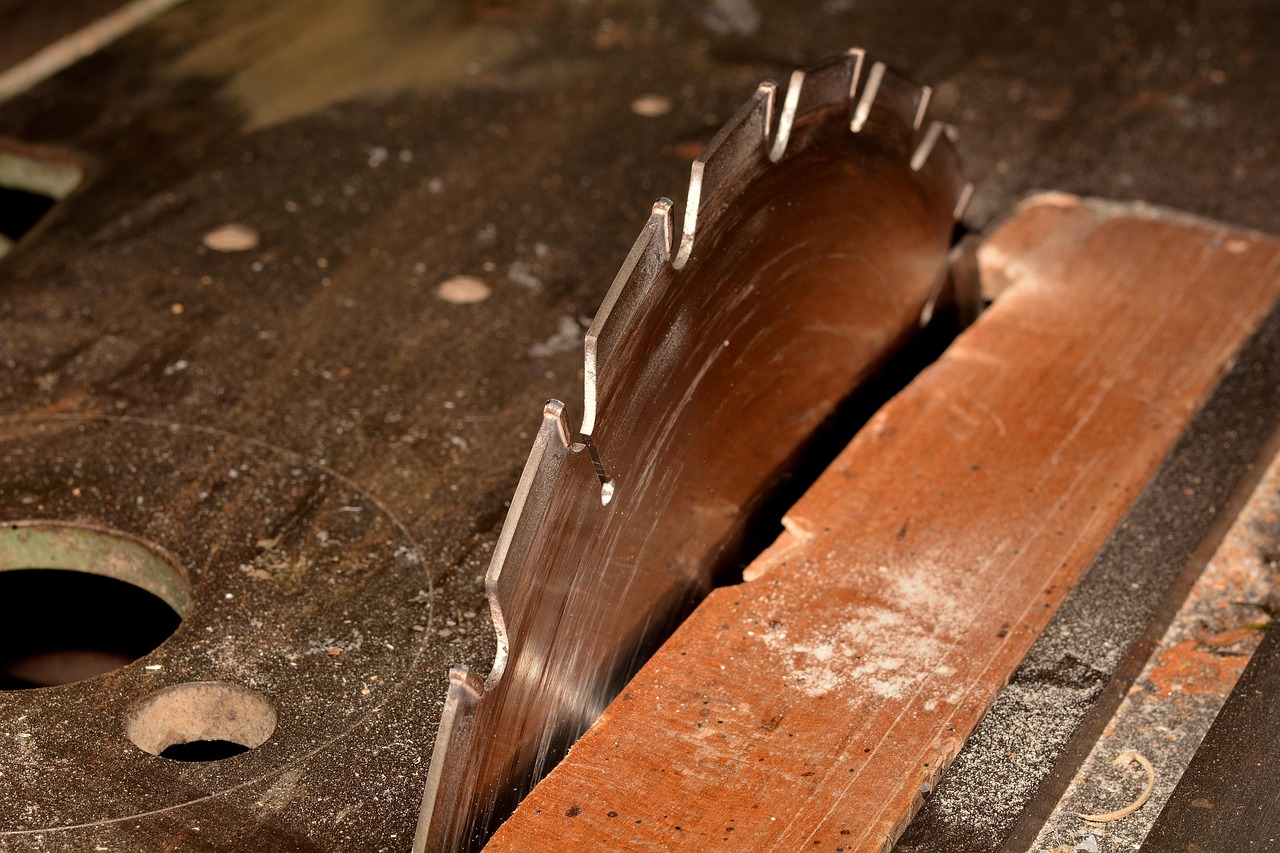Aluminum: Why Your Woodworking Blade Just Died

Picture the scene: A perfectly good 60-tooth blade that sliced through oak like butter thirty seconds ago now sounds like a fork in a garbage disposal. The aluminum piece that seemed "soft enough to cut" has welded itself to three teeth, and the blade won't even make it through pine anymore.
The physics tells the whole story: aluminum doesn't just dull woodworking blades - it fundamentally alters them. The aluminum melts at the cutting point, welds to the carbide teeth, creates heat that warps the blade plate, and introduces vibrations that make every future cut sound like you're torturing metal.
This isn't about aluminum being hard - it's actually softer than most hardwoods. The problem is aluminum's low melting point combined with its tendency to gum up rather than chip away. Wood fibers break cleanly. Aluminum smears and sticks, creating a cascade failure that starts with one tooth and spreads around the blade. (For a different kind of blade destruction, see what PVC does to your saw blades - another cross-material mistake with its own unique chemistry.)
What Actually Happens to Your Blade
When a woodworking blade hits aluminum, the destruction happens fast. The teeth geometry designed for wood - typically a 20-degree hook angle - doesn't cut aluminum so much as smear it. That generates enough friction heat to hit aluminum's melting point in milliseconds.
Once melted, that aluminum doesn't just stick to the carbide teeth. It forms an actual metal-to-metal bond with the cobalt in the carbide. This isn't residue you can clean off. It's now part of the tooth structure.
The contaminated teeth throw the blade out of balance. At 3,450 RPM on a typical table saw, even tiny weight differences create vibration. That vibration generates heat in the blade plate itself, relieving the factory tensioning that keeps the blade flat. Users report blades that "sing" or "howl" after aluminum contact - that's the sound of a blade destroying itself.
How to Know Your Blade is Contaminated
The signs appear in a predictable sequence:
Visual indicators: First comes discoloration on the carbide teeth - a dull gray film that won't wipe off. Then silver streaks or actual chunks of aluminum appear in the gullets between teeth. Pitch builds up faster on contaminated teeth due to increased friction.
Sound changes: Clean blades produce a steady whir. Contaminated blades develop a rhythmic ticking as damaged teeth hit the workpiece, plus a characteristic high-pitched "singing" that experienced users recognize immediately.
Cutting problems: Burning appears on one side of cuts (the side with contaminated teeth). Straight cuts start curving. Vibration gets worse as the blade heats up. The blade that used to glide through hardwood now struggles with soft pine. The damage pattern differs from other material-induced failures - unlike what melamine does to your tools through chip-out and edge destruction, aluminum creates total blade failure.
The Market Reality
Data from blade reconditioning services shows that 15% of "ruined" blades have aluminum contamination. Half can't be restored due to heat damage to the blade plate. The other half requires chemical stripping that costs nearly as much as a mid-range replacement blade.
This is why the industry developed completely separate blade categories. Non-ferrous metal blades use different geometry (negative hook angles), different grinds (triple-chip instead of alternating bevel), and different carbide formulations. They cost significantly more than wood blades because they're engineered for a completely different cutting process.
Professional shops learned to maintain separate saws - one for wood, one for aluminum. The capital cost doubles, but the alternative is constant blade replacement and quality problems. (This material separation makes sense when you consider other blade destroyers lurking in the lumber rack - like what pressure-treated lumber does to saw blades through chemical corrosion rather than heat.)
What Recovery Looks Like
Once aluminum contaminates a woodworking blade, the options are limited:
Chemical stripping: Caustic soda baths dissolve aluminum without attacking carbide. This works if caught early, before heat warps the plate. Success rate drops from 70% if treated immediately to 20% if run until complete failure.
Professional restoration: Some sharpening services specialize in contamination removal. They'll tell you upfront if the blade is salvageable. Many simply refuse aluminum-damaged blades because the success rate doesn't justify the effort.
Reality check: Most contaminated blades become wall decorations. The combination of metallurgical bonding, heat damage, and plate warping usually makes restoration more expensive than replacement.
The Pattern Everyone Learns
The first aluminum cut often seems fine, which creates false confidence. By cut number five, the blade struggles noticeably. By cut ten, it's done.
Thin kerf blades fail faster than standard kerf - less thermal mass, less rigidity. Budget blades actually handle aluminum contamination better than premium ones, ironically, because users are more willing to treat them as disposable.
The workshop pattern is consistent: someone cuts aluminum once, tries to clean the blade, fails, then either maintains separate tools or accepts regular blade replacement as a cost of mixed-material work. There's no magic solution - just physics that makes wood blades and aluminum fundamentally incompatible. (For another blade killer hiding in plain sight, check out what OSB does to circular saws - the glue-and-grit combination that wears blades differently but just as definitively.)